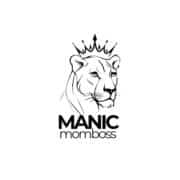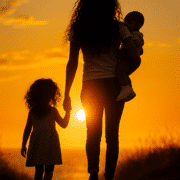Tiny Hands, Big Words: The Power of Baby Sign Language



Hi, I’m Nadya van der Sluis, founder of Manic Momboss.…
Where I was writing about the Rapley method and elimination communication these last months, this column is an extension of it, whereby I share a skill I learned with both of my kids. This skill was helpful these last months with potty training and the Rapley method of my youngest. I am talking about the skill: sign language.
Before babies learn to speak, they already have so much to say. From the moment they begin to observe the world, they are eager to communicate, and baby sign language gives them a voice long before their first words form.
I started using sign language with my children around six months old, and within two weeks they started to wave outside to random people. My youngest is now 9 months, and simple signs like come, more, all done, and sleep are now part of our daily rhythm. It is astonishing how fast both of my children caught on. Before they could say a word, they were able to clearly express what they needed, and I could respond, reducing frustration and deepening our bond.
Why start at six months?
That is typically when babies have developed enough motor control and cognitive awareness to begin connecting gestures with meaning. Even if they do not sign back immediately, consistent repetition from you lays the foundation for communication. By 8 or 9 months, many babies start signing back, and it is magic.
The benefits of baby sign language:
- Less frustration: Babies can tell you when they are hungry, tired, or want more, without tears.
- Stronger connection: It creates a two-way communication path earlier, strengthening trust and understanding.
- Boosts language development: Studies show that signing babies often speak earlier and have larger vocabularies. Fun fact: both of my kids started to say mama when they were 8 months old.
- Cognitive stimulation: Learning gestures boosts memory, attention, and fine motor skills.
- Fosters emotional intelligence: Expressing feelings like happy, sad, or hurt teaches emotional awareness from the start.
- Promotes inclusivity: Introducing sign language early raises awareness and respect for Deaf culture. It teaches children that not all communication looks the same, and that every voice matters, spoken or signed.
In a world striving toward inclusivity, teaching your baby sign language is a small but meaningful step. It not only empowers your child to communicate but also builds bridges between different ways of being and speaking. Whether you are using signs for daily needs or introducing signs from official sign languages like Dutch NGT, ASL, or BSL, you are giving your child the gift of expression, connection, and empathy.
Tiny hands can do big things, especially when they are signing.
What's Your Reaction?

Hi, I’m Nadya van der Sluis, founder of Manic Momboss. I help mompreneurs take charge of their mental health while staying rooted in their own business path. It’s not about balance. It’s about knowing when to lead, when to pause, and how to stay honest with yourself through it all. I’m also a co-author and a keynote speaker, invited to international mental health conferences where I speak to psychiatrists and psychologists about what’s really happening beneath the surface. My mission is to shift the conversation. To bring light to what gets left out of the headlines. Through my columns, I write what most people are afraid to say out loud. Because awareness starts with truth, and I’m here for all of it.



